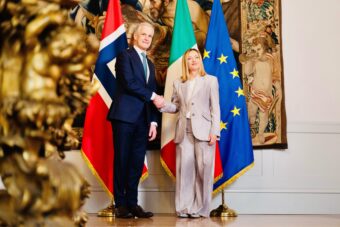
Norway benets from a strong external position. Its external accounts are characterized by a structural current account surplus anda positive net creditor position. The persistent current account surpluses, averaging 10% of GDP over the last two decades, reectNorway’s sizeable energy surplus, high per-capita income levels, and high savings rate. Its large positive net internationalinvestment position of 286.4% of GDP is due to the substantial accumulation of foreign assets through the GPFG. In addition, itsexible exchange rate regime facilitates adjustments, acting as an automatic stabilizer and tends to depreciate when a pronouncednegative shock occurs. The Norwegian krone, as measured by the import-weighted index I-44, fell to record-weak levels under themarket stress iwrites Morningstar in an analyses of Norwegian Economy..
Against this background, Norway has a credible and independent monetary policy authority and proactive regulators. Thegovernment has been taking several measures to reduce vulnerabilities in the housing market reect increased nancial vigilance byauthorities. Current regulations include limiting the debt-to-income ratio to ve times the borrower’s annual income and the loan tovalue ratio at 60% for secondary housing in Oslo. The exibility quota, the mortgage regulation which allows a certain amount of alender’s approved loans to deviate from the requirements in the regulation, has been brought back to pre-pandemic levels at 10%for loans outside Oslo and 8% in Oslo. Nonetheless, banks’ low loan losses (For 2020 as a whole, losses amounted to approximately0.6% of exposures) and strong capital buffers mitigate the risks to nancial stability. The countercyclical capital buffer requirementwas set at 2.5% reecting the build-up of nancial imbalances, primar¬ily in credit and real estate markets, but has since beenreduced to 1.0% in March 2020. Norway’s Strong External Position Provides a Signicant Buffer to Absorb Shocks Norway benets from a strong external position. Its external accounts are characterized by a structural current account surplus anda positive net creditor position. The persistent current account surpluses, averaging 10% of GDP over the last two decades, reectNorway’s sizeable energy surplus, high per-capita income levels, and high savings rate. Its large positive net internationalinvestment position of 286.4% of GDP is due to the substantial accumulation of foreign assets through the GPFG. In addition, itsexible exchange rate regime facilitates adjustments, acting as an automatic stabilizer and tends to depreciate when a pronouncednegative shock occurs. The Norwegian krone, as measured by the import-weighted index I-44, fell to record-weak levels under themarket stress in March 2020. Since then, the krone has appreciated against most currencies and is now back at pre-pandemiclevels. Reduced uncertainty in global nancial markets and a rise in oil prices likely contributed to the krone appreciat, according to
Morningstar.BELGIUM KBC Group NVDENMARKDanske Bank A/S. FINLAND Nordea Bank AB (publ)FRANCE: BNP Paribas SA Crédit Agricole GroupSociété Générale SA GERMANYCommerzbank AG Deutsche Bank AG IRELANDAllied Irish Banks Plc Bank of Ireland Group plcPermanent TSB PlcI TALY Banca Monte dei Paschi di Siena SpABanca Sella Holding SpABanco BPM SpACredito Valtellinese SpAIntesa Sanpaolo SpAUniCredit SpA NETHERLANDSABN AMRO Bank NVING Groep N.V.Coöperatieve Rabobank U.A.
NORWAYDNB ASA PORTUGALBanco Comercial Português, SACaixa Geral de Depósitos, SASPAINABANCA Corporación Bancaria, SABanco Bilbao Vizcaya Argentaria, SABanco de Sabadell, SABanco Santander, SABankia, SABankinter SACaixaBank, SAGrupo Cooperativo Cajamar SCCLiberbank, SA SWEDEN Skandinaviska Enskilda Banken AB (publ.)Svenska Handelsbanken AB (publ)Swedbank AB (publ)UKBarclays PlcHSBC Holdings PlcLloyds Banking Group PlcNatwest Group Plc (formerly Royal Bank of Scotland Group plc)



